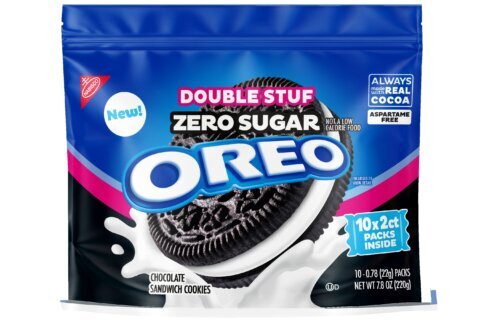WASHINGTON — “The dog ate my homework” isn’t a far-fetched excuse for the students of Ann McCallum.
Neither is, “I ate my homework.”
In fact, eating homework — on all fronts — is encouraged. That’s because the Montgomery County teacher says one of the best ways for kids to learn is to occasionally swap the pencil for a fork.
“Food is universal,” says McCallum, who has taught in Maryland for more than 20 years. “No matter where you are in time and space, we’re all human; we’ve all had food.”
It’s that mentality that prompted McCallum to write and publish all three of her cookbooks in the “Eat Your Homework” book series, including “Eat Your Math Homework,” “Eat Your Science Homework” and “Eat Your U.S. History Homework.” And it was a holiday project that started it all.
Several years ago, McCallum decided to disguise a math lesson in a gingerbread house activity. Introducing tubes of icing and boxes of graham crackers seemed like a great way to continue on with classroom material amid seasonal excitement — and it worked.
“It kind of sparked something — the food and the math,” McCallum says. It made her students realize that “there’s more to math than just memorizing things.”
McCallum took her win in the classroom back to her home kitchen and expanded on the idea of combining math lessons with cooking. She developed recipes for dishes such as “multiplication meatballs” and “variable pizza pi,” which she later published in a cookbook format.
“It really came out of trying to get kids excited about subjects that could be really dull at times. I knew I wanted to get kids to love a subject through food,” she says.
Now, McCallum is out with her third education-focused cookbook, “Eat Your U.S. History Homework,” which connects ancient accounts with savory snacks.
In the book, students can study the relationship between the Native Americans and the pilgrims with a recipe for Thanksgiving succotash, or learn about the hardships of the country’s first colonists with the historically inspired recipe for cherry berry grunt.
“It wasn’t always easy — or a bowl of cherries … It [represents] the ups and slumps of the colonists when they first came,” McCallum says about the cobbler-style dish.
And while the recipes in the book may be rooted in history, McCallum says they all call for modern ingredients, and many can be made by 7-to-11-year-olds with little parental supervision.
“We’re not going to use bear grease, we’re not going to skin squirrels. Just use a stick of butter,” McCallum says.
After all, the point of the recipes is to ignite an interest in the corresponding lessons.
“The idea of getting kids to love math, science, history, it’s really an amazing thing.”
Want your scholar to get inspired in the kitchen? Try McCallum’s recipes below:









